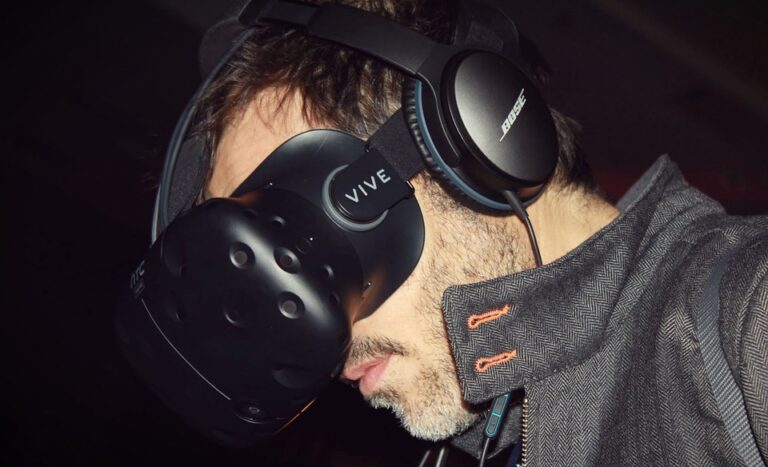Exploring the Technology Behind Augmented Reality Games: AR Software and Hardware
Augmented reality (AR) games are captivating an ever-growing audience, merging the digital world with the physical one. This innovative intersection has reshaped not only gaming but also social interactions, education, and various industries. In this article, we’ll explore the technology behind augmented reality games, including the software and hardware that power these experiences.
Understanding Augmented Reality Games
Augmented reality games leverage digital information overlaid onto the real world, enabling players to interact with both their physical environment and digital characters simultaneously. Unlike virtual reality, which creates an entirely immersive online space, AR maintains a player’s connection to their surroundings, offering a unique gaming experience.
The Growth of Augmented Reality Games
According to Statista, the global augmented reality market is projected to grow from $30.7 billion in 2021 to $300 billion by 2024. This astronomical rise highlights the increasing interest and investment in AR technologies. As players continue to demand more engaging experiences, the development of AR games promises to surge.
The Software Behind Augmented Reality Games
Core Technologies
AR games are built on several core software technologies, including:
- Computer Vision: This technology enables games to recognize and interpret the real-world environment. It helps digital elements adapt based on the user’s surroundings.
- Simultaneous Localization and Mapping (SLAM): SLAM technology allows devices to create a map of their surroundings while keeping track of their location within that environment. This is crucial for placing virtual objects correctly in AR.
- Depth Tracking: Depth sensing uses hardware like LiDAR (Light Detection and Ranging) to determine how far away objects are, aiding in the placement of digital characters and items in a realistic manner.
Platforms for AR Development
Developers utilize various platforms to create AR experiences:
- Unity: This popular game development engine offers AR Foundation, making it easier for developers to build AR games across various devices.
- ARKit and ARCore: Apple’s ARKit and Google’s ARCore are vital tools for building AR applications on iOS and Android, respectively. Both frameworks provide advanced functionalities like motion tracking and lighting estimation.
The Hardware Behind Augmented Reality Games
The hardware used in augmented reality games plays a crucial role in creating a seamless user experience. Here are the key components:
Mobile Devices
Most AR games are played on smartphones. Modern devices are equipped with powerful CPUs, GPUs, and cameras that facilitate the advanced functionalities required for high-quality AR experiences. The following features make mobile devices ideal for AR gaming:
- High-resolution Displays: These offer vivid imagery, enhancing the realism of AR experiences.
- Advanced Sensors: Gyroscopes and accelerometers provide critical data for tracking movement and orientation.
AR Glasses and Wearables
As AR continues to evolve, specialized hardware such as AR glasses is becoming more prevalent. These devices provide an even more immersive experience by integrating digital content with the real world directly in front of the user’s eyes.
-
Microsoft HoloLens: This device showcases cutting-edge technology, enabling users to interact with holograms in real environments, blurring the lines between physical and digital worlds.
- Magic Leap: Another gaming-centric AR hardware option, allowing users to play interactive games by projecting digital elements into their surroundings.
The Future of AR Hardware
A report by MarketsandMarkets predicts that the AR headset market will reach nearly $198 billion by 2024. With continuous improvements in battery life, processing power, and design, the future of AR hardware looks promising, ensuring enhanced gameplay experiences.
Real-World Application and Examples
A notable example of successful augmented reality games is Pokémon GO, which took the world by storm by encouraging players to explore their neighborhoods to catch virtual Pokémon. Leveraging AR technology, the game created a unique blend of physical movement and interactive gameplay, resulting in over 300 million downloads and a renewed interest in outdoor activity.
The Role of Community and Social Interaction
AR games not only focus on individual play but foster social interaction. Players often collaborate or compete with others in real-time, forming communities around shared experiences.
Conclusion
As the world becomes increasingly saturated with digital content, augmented reality games represent a fantastic fusion of technology and creativity. With advancements in AR software and hardware, we can expect exciting developments that will reshape the gaming landscape in the years to come.
For those interested in the wider implications of AR technology, check out our articles on the Impact of AR in Businesses and Mobile Gaming Trends at buzzo.live. For more information on AR technology developments, visit Statista’s AR Overview and MarketsandMarkets.
Images:
- An immersive AR gaming experience with a player interacting with digital elements (alt text: "Augmented Reality Games").
- Hardware examples such as AR glasses in use (alt text: "AR Software and Hardware for Gaming").
By embracing augmented reality, the gaming industry is not just evolving; it’s revolutionizing how we play, interact, and perceive our environments.


